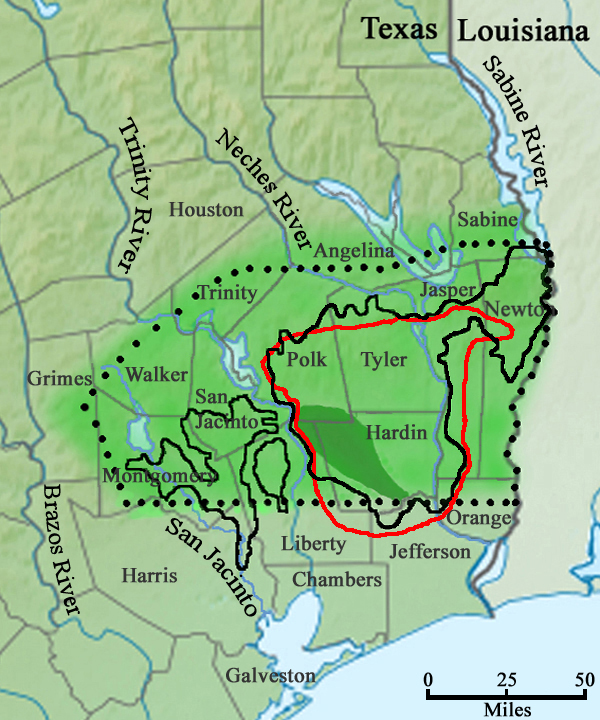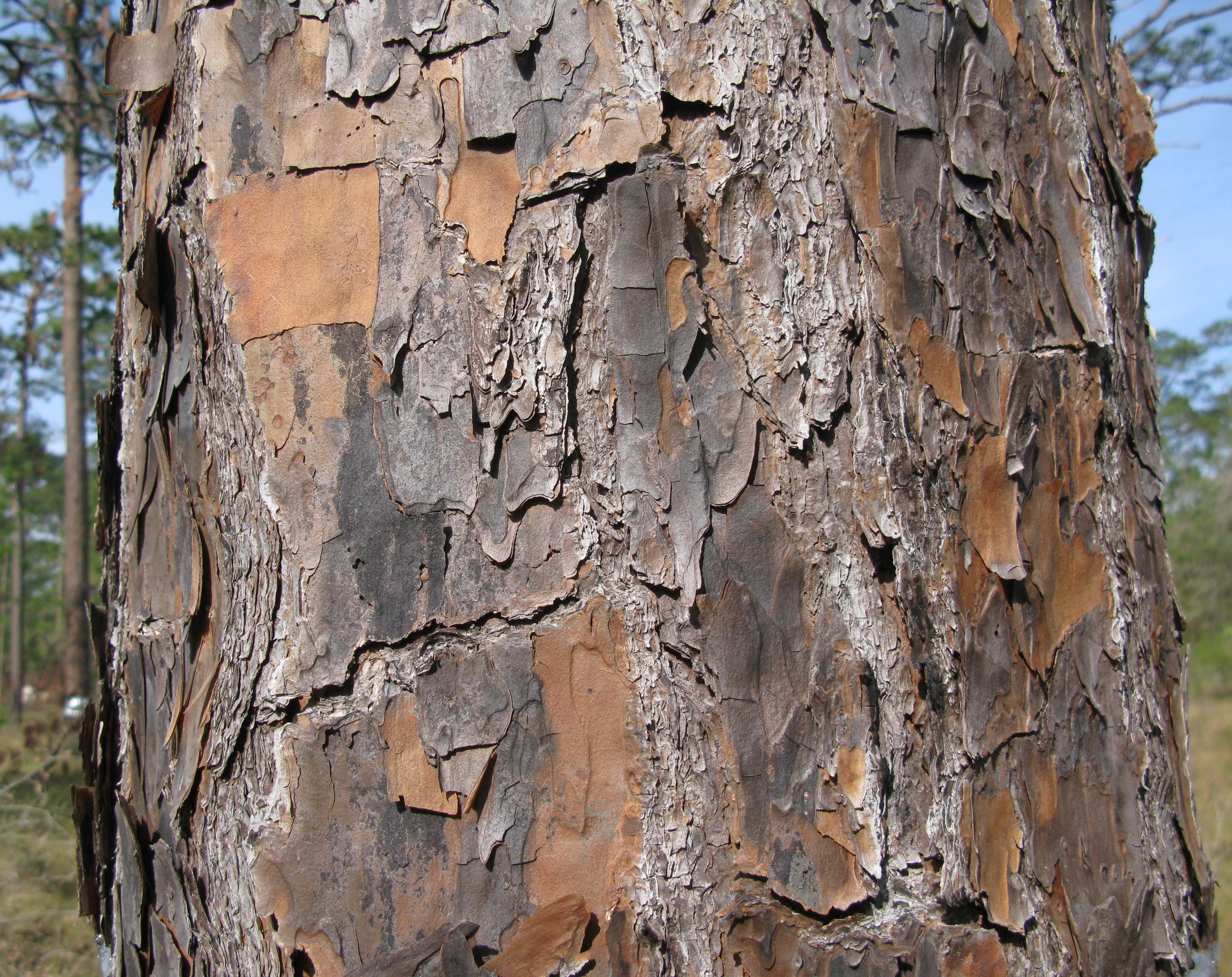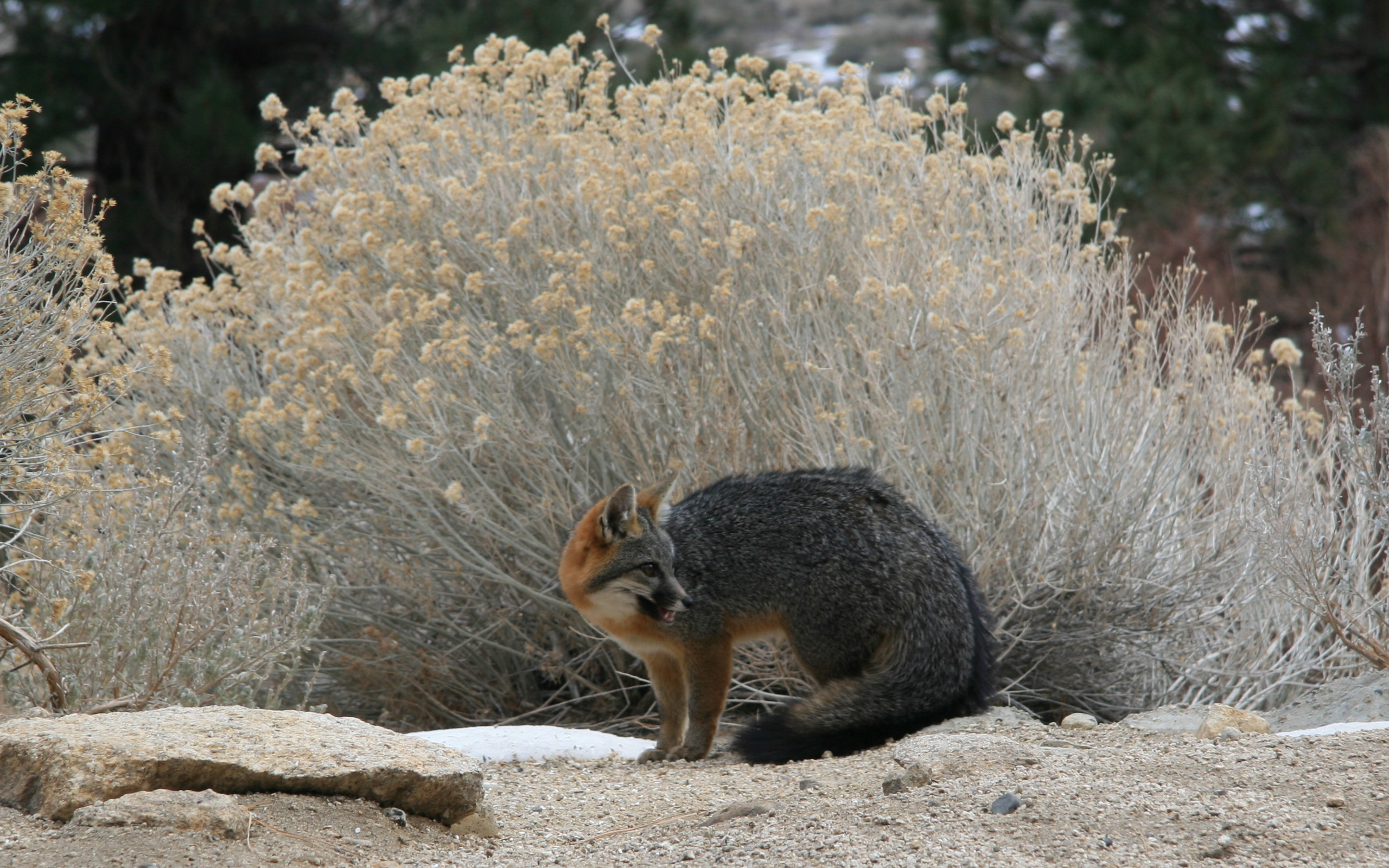|
Martin Dies, Jr. State Park
Martin Dies Jr. State Park is a 705-acre state park located along U.S. Route 190 on the banks of the Steinhagen Reservoir in Jasper and Tyler counties in Texas. The park is managed by the Texas Parks and Wildlife Department. The park consists of three units; Hen House Ridge Unit, Walnut Ridge Unit and Cherokee Unit. Cherokee Unit is a day use area only, whereas the other two units allow camping. History The state leased the park's land from the United States Army Corps of Engineers in 1964, and officially opened it as Dam B State Park in 1965, renaming it to honor State Senator Martin Dies Jr. the same year. Activities The park offers recreational activities such as paddling, fishing, swimming, hiking, cycling, and volleyball. The park's distance from major cities means dark skies and it offers stargazing events at times. Nature The park sits on the northern edge of the Big Thicket and south of where the Angelina River and Neches River meet. The two ecosystems contribute to ... [...More Info...] [...Related Items...] OR: [Wikipedia] [Google] [Baidu] |
Jasper County, Texas
Jasper County is a county located in the U.S. state of Texas. As of the 2020 census, its population was 32,980. Its county seat is Jasper. The county was created as a municipality in Mexico in 1834, and in 1837 was organized as a county in the Republic of Texas. It is named for William Jasper, an American Revolutionary War hero. Geography According to the U.S. Census Bureau, the county has a total area of , of which are land and (3.2%) are covered by water. Major highways * U.S. Highway 69 * U.S. Highway 96 * U.S. Highway 190 * State Highway 62 * State Highway 63 * Recreational Road 255 Adjacent counties * San Augustine County (north) * Sabine County (northeast) * Newton County (east) * Orange County (south) * Hardin County (southwest) * Tyler County (west) * Angelina County (northwest) National protected areas * Angelina National Forest (part) * Big Thicket National Preserve (part) * Sabine National Forest (part) Demographics ''Note: the US Census treats ... [...More Info...] [...Related Items...] OR: [Wikipedia] [Google] [Baidu] |
Big Thicket
The Big Thicket is the name given to a somewhat imprecise region of a heavily-forested area of Southeast Texas in the United States. This area represents a portion of the mixed pine-hardwood forests of southeast US. The National Park Service established the Big Thicket National Preserve (BTNP) within the region in 1974 and it is recognized as a biosphere reserve by UNESCO. Although the diversity of animals in the area is high, with over 500 vertebrates, it is the complex mosaic of ecosystems and plant diversity that is particularly remarkable. Biologists have identified at least eight, and up to eleven, ecosystems in the Big Thicket area. More than 160 species of trees and shrubs, 800 herbs and vines, and 340 types of grasses are known to occur in the Big Thicket, and estimates as high as over 1000 flowering plant species and 200 trees and shrubs have been made, plus ferns, carnivorous plants, and more. The Big Thicket has historically been the most dense forest region in what is n ... [...More Info...] [...Related Items...] OR: [Wikipedia] [Google] [Baidu] |
Bald Cypress
''Taxodium distichum'' (bald cypress, swamp cypress; french: cyprès chauve; ''cipre'' in Louisiana) is a deciduous conifer in the family Cupressaceae. It is native to the southeastern United States. Hardy and tough, this tree adapts to a wide range of soil types, whether wet, salty, dry, or swampy. It is noted for the russet-red fall color of its lacy needles. This plant has some cultivated varietiesFarjon, A. (2005). ''Monograph of Cupressaceae and Sciadopitys''. Royal Botanic Gardens, Kew. and is often used in groupings in public spaces. Common names include bald cypress, swamp cypress, white cypress, tidewater red cypress, gulf cypress and red cypress. The bald cypress was designated the official state tree of Louisiana in 1963. Description ''Taxodium distichum'' is a large, slow-growing, and long-lived tree. It typically grows to heights of and has a trunk diameter of . The main trunk is often surrounded by cypress knees. The bark is grayish brown to reddish brown ... [...More Info...] [...Related Items...] OR: [Wikipedia] [Google] [Baidu] |
Pinus Echinata
''Pinus echinata'', the shortleaf pine, is a species of pine native to the southeastern United States. Description The tree is variable in form, sometimes straight, sometimes crooked, with an irregular crown. The tree reaches heights of with a trunk diameter of . The leaves are needle-like, in fascicles (bundles) of two and three mixed together, and from long. The cones are long, with thin scales with a transverse keel and a short prickle. They open at maturity but are persistent. Shortleaf pine seedlings develop a persistent J-shaped crook near the ground surface. Axillary and other buds form near the crook and initiate growth if the upper stem is killed by fire or is severed. The bark has resin pockets, which form small depressions, less than in diameter. This feature can be used to distinguish ''P. echinata'' from all other ''Pinus'' species within its native range. Taxonomy The Latin specific epithet of ''echinata'' refers to hedgehog, from ''echinus''. Di ... [...More Info...] [...Related Items...] OR: [Wikipedia] [Google] [Baidu] |
Pinus Palustris
The longleaf pine (''Pinus palustris'') is a pine species native to the Southeastern United States, found along the coastal plain from East Texas to southern Virginia, extending into northern and central Florida. In this area it is also known as "yellow pine" or "long leaf yellow pine", although it is properly just one out of a number of species termed yellow pine. It reaches a height of and a diameter of . In the past, before extensive logging, they reportedly grew to with a diameter of . The tree is a cultural symbol of the Southern United States, being the official state tree of Alabama. Contrary to popular belief, this particular species of pine is not officially the state tree of North Carolina. Description The bark is thick, reddish-brown, and scaly. The leaves are dark green and needle-like, and occur in bundles of mainly three, sometimes two or four, especially in seedlings. They often are twisted and in length. A local race of ''P. palustris'' in a cove near Rocki ... [...More Info...] [...Related Items...] OR: [Wikipedia] [Google] [Baidu] |
Pinus Taeda
''Pinus taeda'', commonly known as loblolly pine, is one of several pines native to the Southeastern United States, from East Texas to Florida, and north to southern New Jersey. The wood industry classifies the species as a southern yellow pine. U.S. Forest Service surveys found that loblolly pine is the second-most common species of tree in the United States, after red maple. For its timber, the pine species is regarded as the most commercially important tree in the Southeastern U.S. The common name loblolly is given because the pine species is found mostly in lowlands and swampy areas. Loblolly pine is the first among over 100 species of ''Pinus'' to have its complete genome sequenced. As of March 2014, it was the organism having the largest sequenced genome size. Its genome, with 22 billion base pairs, is seven times larger than that of humans. As of 2018, assembly of the axolotl genome (32Gb) displaced loblolly pine as the largest assembled genome. The loblolly pine was sel ... [...More Info...] [...Related Items...] OR: [Wikipedia] [Google] [Baidu] |
Bobcat
The bobcat (''Lynx rufus''), also known as the red lynx, is a medium-sized cat native to North America. It ranges from southern Canada through most of the contiguous United States to Oaxaca in Mexico. It is listed as Least Concern on the IUCN Red List since 2002, due to its wide distribution and large population. Although it has been hunted extensively both for sport and fur, populations have proven stable, though declining in some areas. It has distinctive black bars on its forelegs and a black-tipped, stubby (or "bobbed") tail, from which it derives its name. It reaches a total length (including the tail) of up to . It is an adaptable predator inhabiting wooded areas, semidesert, urban edge, forest edge, and swampland environments. It remains in some of its original range, but populations are vulnerable to extirpation by coyotes and domestic animals. Though the bobcat prefers rabbits and hares, it hunts insects, chickens, geese and other birds, small rodents, and deer. Pre ... [...More Info...] [...Related Items...] OR: [Wikipedia] [Google] [Baidu] |
Gray Fox
The gray fox (''Urocyon cinereoargenteus''), or grey fox, is an omnivorous mammal of the family Canidae, widespread throughout North America and Central America. This species and its only congener, the diminutive island fox (''Urocyon littoralis'') of the California Channel Islands, are the only living members of the genus ''Urocyon'', which is considered to be genetically basal to all other living canids. Its species name ''cinereoargenteus'' means " ashen silver". It was once the most common fox in the eastern United States, and though still found there, human advancement and deforestation allowed the red fox to become the predominant fox-like canid. Despite this post-colonial competition, the gray fox has been able to thrive in urban and suburban environments, one of the best examples being southern Florida. The Pacific States and Great Lakes region still have the gray fox as their prevalent fox. Etymology The genus ''Urocyon'' comes from the Latin 'uro' meaning tail, an ... [...More Info...] [...Related Items...] OR: [Wikipedia] [Google] [Baidu] |
Red Fox
The red fox (''Vulpes vulpes'') is the largest of the true foxes and one of the most widely distributed members of the Order (biology), order Carnivora, being present across the entire Northern Hemisphere including most of North America, Europe and Asia, plus parts of North Africa. It is listed as least concern by the IUCN. Its range has increased alongside human expansion, having been Foxes in Australia, introduced to Australia, where it is considered harmful to native mammals and bird populations. Due to its presence in Australia, it is included on the list of the List of the world's 100 worst invasive species, "world's 100 worst invasive species". The red fox originated from smaller-sized ancestors from Eurasia during the Middle Villafranchian period, and colonised North America shortly after the Wisconsin glaciation. Among the true foxes, the red fox represents a more progressive form in the direction of Carnivore, carnivory. Apart from its large size, the red fox is disting ... [...More Info...] [...Related Items...] OR: [Wikipedia] [Google] [Baidu] |
Nine-banded Armadillo
The nine-banded armadillo (''Dasypus novemcinctus''), also known as the nine-banded long-nosed armadillo or common long-nosed armadillo, is a mammal found in North, Central, and South America, making it the most widespread of the armadillos. Its ancestors originated in South America, and remained there until the formation of the Isthmus of Panama allowed them to enter North America as part of the Great American Interchange. The nine-banded armadillo is a solitary, mainly nocturnalArmadillo Observation Msu.edu. Retrieved on October 17, 2013. Ksr.ku.edu. Retrieved on October 17, 2013. animal, found in many kinds of habitats, from mature and second ... [...More Info...] [...Related Items...] OR: [Wikipedia] [Google] [Baidu] |
Virginia Opossum
The Virginia opossum (''Didelphis virginiana''), also known as the North American opossum, is the only opossum living north of Mexico, its range extending south into Central America. It is the northernmost marsupial in the world. In the United States and Canada, it is typically called a possum, 'possum or opossum. It is a solitary nocturnal animal about the size of a domestic cat, and a successful opportunist. Opossums are familiar to many North Americans as they frequently inhabit settled areas near food sources like trash cans, pet food, compost piles, gardens or housemice. Their slow and nocturnal nature, and their attraction to roadside carrion, makes many roadkill. Name The Virginia opossum is the original animal named "opossum", a word which comes from Algonquian ''wapathemwa'', meaning "white animal". Colloquially, the Virginia opossum is frequently just called a "possum". The name ''opossum'' is applied more generally to any of the other marsupials of the families Dide ... [...More Info...] [...Related Items...] OR: [Wikipedia] [Google] [Baidu] |
Raccoon
The raccoon ( or , ''Procyon lotor''), sometimes called the common raccoon to distinguish it from other species, is a mammal native to North America. It is the largest of the procyonid family, having a body length of , and a body weight of . Its grayish coat mostly consists of dense underfur, which insulates it against cold weather. Three of the raccoon's most distinctive features are its extremely dexterous front paws, its facial mask, and its ringed tail, which are themes in the mythologies of the indigenous peoples of the Americas relating to the animal. The raccoon is noted for its intelligence, as studies show that it is able to remember the solution to tasks for at least three years. It is usually nocturnal and omnivorous, eating about 40% invertebrates, 33% plants, and 27% vertebrates. The original habitats of the raccoon are deciduous and mixed forests, but due to their adaptability, they have extended their range to mountainous areas, coastal marshes, and urban ... [...More Info...] [...Related Items...] OR: [Wikipedia] [Google] [Baidu] |






.jpg)


_2.jpg)